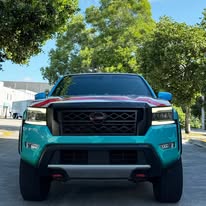KN95 Face Mask have become an essential piece of personal protective equipment, particularly in situations where safeguarding against airborne particles is critical. These masks are designed to offer a high level of filtration, effectively trapping particles as small as 0.3 microns. Such efficiency makes them a reliable option for reducing exposure to pollutants, allergens, bacteria, and viruses in various environments, including workplaces, public transport, and healthcare settings.
The structure of KN95 masks incorporates multiple layers of synthetic material, each serving a specific function to enhance filtration and comfort. Their design includes features such as a flexible nose bridge and elastic ear loops, ensuring a secure and snug fit for different face shapes and sizes. Unlike standard face coverings, KN95 masks provide a tight seal around the nose and mouth, which minimises the risk of unfiltered air entering or escaping.
Given the growing demand for these masks, it is vital to understand their unique advantages, proper usage, and how they compare to other protective face coverings. This knowledge empowers individuals to make informed choices about the type of mask that best suits their needs, whether for personal, professional, or public health purposes. By selecting the right mask, you can significantly reduce the risks associated with airborne contaminants.
Design and Material of KN95 Masks
1. Multi-Layer Filtration Structure
KN95 masks are constructed with multiple layers, typically including non-woven fabric, melt-blown filters, and protective inner layers that work together to block particles, dust, and pathogens effectively.
2. High-Efficiency Melt-Blown Filter Material
The core filtration layer is made of melt-blown polypropylene, designed to trap microscopic particles and achieve up to 95% filtration efficiency for airborne contaminants.
3. Comfortable Non-Woven Outer Fabric
The outer and inner layers use soft, non-woven fabric that provides comfort during long wear while ensuring breathability and reducing skin irritation.
4. Ergonomic 3D Design for a Secure Fit
KN95 masks feature a contoured 3D shape that fits snugly over the nose and mouth, minimizing air leakage and improving protection. Adjustable nose clips enhance the seal and comfort.
5. Elastic Ear Loops and Adjustable Nose Bridge
Flexible ear loops and a moldable nose bridge ensure a tight yet comfortable fit, allowing the mask to adapt to different face shapes for better filtration performance.
How KN95 Masks Work
KN95 masks function through a highly efficient filtration process enabled by their multi-layered construction. The core of this process lies in the melt-blown filter layer, which is electrostatically charged to attract and capture particles as small as 0.3 microns. This layer is complemented by the outer and inner layers, working together to block larger particles while ensuring comfort for the wearer.
The electrostatic charge in the melt-blown layer enhances its ability to trap smaller particles that might otherwise bypass standard barriers. This mechanism is especially effective in environments where exposure to airborne pollutants, allergens, or pathogens is a concern. The mask’s design ensures that these particles are drawn in and held within the layers, preventing them from entering the respiratory system.
What sets the KN95 mask apart is its ability to maintain a tight seal around the face, an essential feature for reducing unfiltered airflow. The adjustable nose bridge and elastic ear loops ensure this secure fit, which is critical for minimising leaks. Unlike loose-fitting coverings, the KN95 mask’s design creates a barrier that directs inhaled and exhaled air through the filtration layers. This unique combination of material and structure is key to its effectiveness in protecting against harmful airborne particles in various settings.
Proper Usage of KN95 Masks
To ensure your KN95 mask functions effectively, it is crucial to put it on and wear it correctly. Begin by checking the mask for any visible damage, such as tears or stretched ear loops, as a compromised mask cannot provide proper protection. Once you have confirmed it is intact, position the mask with the nose bridge at the top and the inner layer facing your skin.
Carefully secure the elastic ear loops around both ears, making sure the mask covers both your nose and mouth completely. The next step is to press the adjustable nose bridge firmly against the contours of your nose, creating a tight seal. This step is essential to minimise air leakage, ensuring that inhaled and exhaled air is filtered through the mask.
While wearing the mask, avoid touching its surface, as this could transfer contaminants to your hands or compromise the material. If you must adjust the mask, do so using the edges or ear loops. If the mask becomes damp or visibly dirty during use, replace it immediately. Proper handling ensures the mask maintains its integrity and effectiveness, especially when worn in settings where exposure to airborne particles is heightened. Always store unused masks in a clean, dry location to keep them ready for use.
Comparing KN95 with Other Masks
KN95 masks stand out for their high filtration efficiency compared to other commonly used face coverings. Surgical masks, while effective at reducing the spread of large droplets, do not provide the tight seal that KN95 masks offer, making them less effective against smaller airborne particles. The difference lies in the design and material; surgical masks are loose-fitting and do not create a protective barrier against unfiltered airflow. Cloth masks, on the other hand, are widely available and reusable, but their filtration capabilities are significantly lower than those of KN95 masks. The effectiveness of cloth masks often depends on the fabric type, layering, and fit, but they generally cannot match the performance of the multi-layered structure found in KN95 masks. For individuals in high-risk settings, such as healthcare professionals or those in crowded indoor spaces, the enhanced filtration and secure fit of KN95 masks make them a preferable choice. Additionally, while reusable masks may be more cost-effective and environmentally friendly, they require regular washing and maintenance, which can limit their practicality in certain scenarios. When prioritising protection, especially in environments with higher exposure to airborne contaminants, KN95 masks provide an advanced level of filtration that other mask types cannot achieve.
Maintenance and Storage of KN95 Masks
1. Store Masks in a Clean, Dry Environment
Keep KN95 masks in a cool, dry place away from direct sunlight, moisture, and contaminants to preserve their filtration efficiency and structural integrity.
2. Avoid Folding or Crushing the Mask
Maintain the mask’s shape by storing it flat or in a breathable container. Folding or compressing the mask can damage the filtration layers and reduce effectiveness.
3. Limit Reuse and Follow Manufacturer Guidelines
KN95 masks are designed for limited reuse. Follow the manufacturer’s recommendations on the number of uses and discard the mask once it shows signs of wear, moisture, or contamination.
4. Handle with Clean Hands
Always wash or sanitize your hands before putting on or removing a KN95 mask to prevent transferring germs or dirt onto the mask’s surface.
5. Dispose of Worn or Damaged Masks Properly
When the mask becomes dirty, damp, or difficult to breathe through, dispose of it responsibly in a sealed bag or designated waste bin to prevent contamination.
Legal and Regulatory Standards
KN95 masks are designed to meet rigorous international standards, ensuring they provide effective filtration and protection. In the UK, it is important to be aware that KN95 masks must comply with safety criteria equivalent to recognised global regulations, such as the EN149 standard for FFP2 masks within Europe. This ensures the mask achieves a filtration efficiency of at least 94%, making it suitable for protecting against fine particles and airborne hazards.
When purchasing KN95 masks, look for clear labelling on the product or packaging, including any applicable certification marks, to confirm their compliance with these standards. It is also vital to purchase masks from reputable retailers or suppliers to avoid counterfeit products, which may not meet the necessary filtration requirements. Some masks may include additional testing or validation documents, which can provide reassurance about their quality and effectiveness.
Regulatory compliance not only guarantees the mask’s performance but also ensures that the product has undergone thorough testing for safety and reliability. Pay attention to any specific guidance on the mask’s intended use, as this can vary depending on the certification process. Understanding the regulatory framework can help individuals select the most appropriate and reliable KN95 masks for their needs.
Environmental Impact of KN95 Masks
The increased usage of KN95 masks has led to growing concerns regarding their environmental footprint, particularly due to the materials used in their construction. KN95 masks are predominantly made from polypropylene, a type of plastic that is not biodegradable. Once disposed of, these masks can persist in landfills or the natural environment for many years, contributing to the global problem of plastic pollution. Additionally, improper disposal, such as littering, can result in masks entering waterways, where they pose risks to marine life and ecosystems.
Efforts to address these issues include exploring biodegradable alternatives and improving recycling initiatives. Although traditional recycling processes cannot handle used masks due to contamination risks, innovative methods are being developed to safely process these items. Individuals can also reduce environmental harm by responsibly discarding used masks in designated waste bins, ensuring they do not end up in public spaces or nature.
To further mitigate waste, some manufacturers are investigating reusable filter options that provide similar protection while decreasing single-use plastic dependency. Governments and organisations are also promoting awareness about sustainable practices, encouraging proper disposal and advocating for investment in more environmentally friendly materials and solutions for protective equipment like KN95 masks.
Conclusion
KN95 Face Mask have become a dependable option for those needing higher levels of protection in various settings, from healthcare facilities to crowded public spaces. Their design prioritises both functionality and comfort, offering a secure fit and superior filtration compared to many alternative face coverings. With the ability to block particles as small as 0.3 microns, they are particularly suited for environments where exposure to airborne contaminants is a concern. Proper usage and care significantly enhance their performance, making it essential to follow guidelines for fitting, handling, and storage. Regulatory standards also play a crucial role in ensuring the quality and reliability of these masks, highlighting the importance of purchasing from trusted suppliers. Furthermore, addressing their environmental impact by adopting responsible disposal methods can help mitigate the strain on ecosystems, while developments in more sustainable materials and designs may offer promising solutions in the future. For those seeking a combination of efficiency and practicality, KN95 masks remain a robust choice in safeguarding personal health and supporting broader public safety efforts.
6 FAQS
1. **What sets KN95 Face Mask apart from cloth masks?**
– KN95 Face Mask offer significantly higher filtration efficiency compared to cloth masks. Their multi-layered design and secure fit provide protection against fine particles that cloth masks may not effectively filter.
2. **How can I ensure my KN95 mask fits correctly?**
– Adjust the nose bridge to mould securely to your face and check for any gaps around the edges. A well-fitted mask should cover your nose and mouth entirely, minimising air leakage.
3. **Can KN95 masks be worn by children?**
– KN95 masks are typically designed for adults. However, some manufacturers produce child-specific sizes to ensure a proper fit for younger users.
4. **What are the signs that a KN95 mask needs replacing?**
– Replace your mask if it becomes damp, dirty, damaged, or loses its secure fit. These issues can reduce its filtration efficiency and protective capabilities.
5. **Are KN95 masks suitable for people with breathing difficulties?**
– KN95 masks may feel restrictive due to their tight seal. Individuals with breathing difficulties should consult a medical professional before use.
6. **How should KN95 masks be stored when not in use?**
– Store masks in a clean, breathable container in a cool, dry place, avoiding direct sunlight or high humidity to maintain their effectiveness.
| Related Business Listings |
| Contact Directory |
| Local Business Profiles |

